
Séminaires
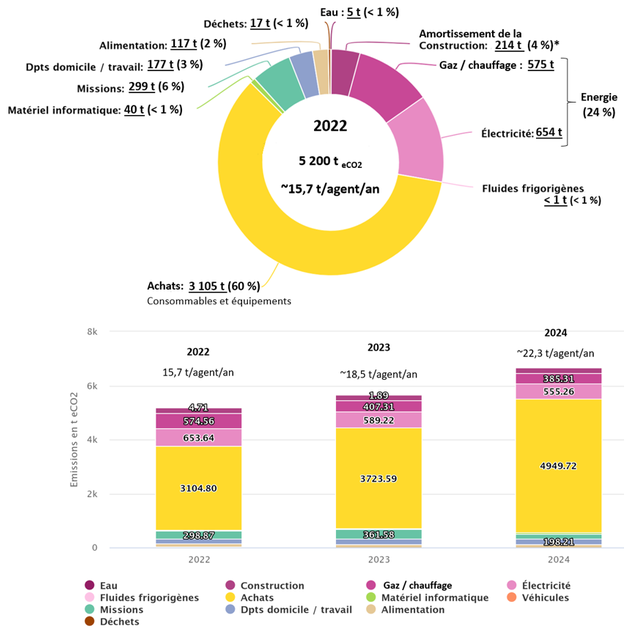
Empreinte carbone du C2N : du calcul à l’action
C2N, Amphithéâtre du C2N, PalaiseauSéminaires
Le bilan carbone du C2N consolidé sur les données 2022, et provisoire pour les données 2023, et 2024 a été établi entre mars et juillet 2025. Ce travail a permis d’analyser les principaux postes du bilan carbone du laboratoire, d’extraire le bilan carbone de la centrale de technologie du C2N, et enfin d’évaluer l’effet théorique de scenarios de réduction [1]. En parallèle, l’équipe BEGES (Bilan d’Emission de Gaz à Effet de Serre) et les référents DD (Développement Durable), se sont penchés sur l’empreinte carbone moyenne des laboratoires de CNRS-Physique, et sur des actions concrètes mises en place dans d’autres laboratoires pour la réduction de leur empreinte.
Ce séminaire comportera deux parties :
Dans une première partie, les principaux résultats du bilan carbone du C2N seront rappelés, puis détaillés pour les postes principaux. Des pistes possibles pour la réduction de l’empreinte seront présentées, pour chacun des postes. A cette occasion seront résumées les actions 2025 pour les économies de ressources / d’énergie et leurs effets.
Dans la seconde partie, une discussion sera engagée avec l’ensemble des participants et participantes pour faire émerger des propositions d’actions faisant consensus, visant une mise en œuvre à l’horizon ~mi-2026.
[1] Jules Becquemont, Antoine Darret. 2022 Carbon Footprint Assessment of C2N and its Micro-Nanotechnoloy Facility – methodology, implementation, analysis and reduction strategies. CNRS; Université Paris-Saclay; Université Paris Cité. 2025. ⟨hal-05203071⟩
Ce séminaire / AG sera présenté par les référents développement durable et l’équipe BEGES 2025 du C2N (par ordre alphabétique des prénoms) : Amanda Trepagny, Anne Talneau, Antonella Cavanna, Aristide Lemaître, Daniele Melati, Elodie Colin,Federico Panciera, Guillemin Rodary, Jean-Michel Manceau, Marine André, Martina Morassi, Nadia Belabas, Nathalie Bardou, Sophie Bouchoule et Stefano Pirotta
Ce séminaire est le dernier du mini-cycle de séminaires « Développement Durable » 2025 organisé avec l’équipe séminaires du C2N.
Il fait partie des séminaires permettant de valider un module doctoral au sein des écoles doctorales EOBE et EDOM.
Les diapositives seront en anglais, la présentation sera en français.
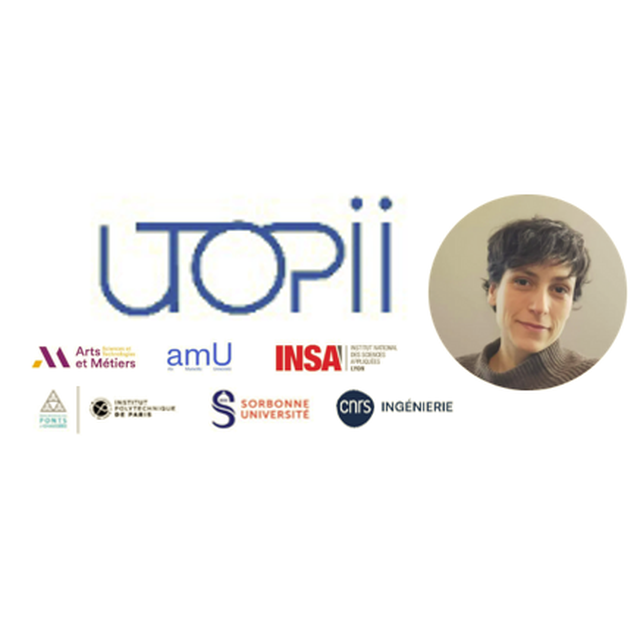
Repenser l’impact environnemental de la recherche en ingénierie, à partir de l’analyse du cycle de vie des projets de recherche
, C2N, Amphitheater, PalaiseauSéminaires
Résumé
Face aux enjeux environnementaux, la recherche scientifique française devra s’adapter et accélérer sa transformation. CNRS Ingénierie, Aix- Marseille Université, l’École nationale des ponts et chaussées (ENPC), l’École nationale supérieure d’arts et métiers (ENSAM), INSA Lyon et Sorbonne Université ont lancé conjointement dans ce but l’Unité d’Appui et de Recherche (UAR) UTOPII – Unité Transdisciplinaire d’Orientation et de Prospective des Impacts Environnementaux. l'UAR créé en janvier 2025, a pour objectif d’évaluer de façon exhaustive, grâce à l’analyse du cycle de vie (ACV), les impacts environnementaux liés à la recherche française, notamment dans le domaine de l’ingénierie et des technologies émergentes, dans le but d'identifier les pistes pour réduire cette empreinte environnementale. Dans une démarche prospective, il s’agit notamment d’estimer les impacts environnementaux des résultats de la recherche, et non pas uniquement de ses pratiques. Au cours de ce séminaire je détaillerai l'organisation et la trajectoire de l'UAR, le travail mené en son sein depuis sa création, ainsi qu’un état des lieux des méthodologies basées sur l'ACV pour application aux projets de recherche. Je discuterai de la manière dont ces méthodologies pourront permettre à la communauté de recherche de mieux évaluer ses activités et orienter son travail académique.
https://fr.linkedin.com/pulse/utopii-pour-repenser-limpact-environnemental-de-la-recherche-q8vre
https://www.insa-lyon.fr/sites/www.insa-lyon.fr/files/20250401_cp_utopii.pdf
A propos de ..
Myriam SAADE est Diplômée de l’École Polytechnique Fédérale de Lausanne et docteure en géosciences et environnement. Elle a été chercheuse au laboratoire Navier et responsable académique du département Génie civil et construction de l’École nationale des ponts et chaussées. Ses travaux portent sur l’analyse du cycle de vie prospective appliquée aux infrastructures, ainsi que sur la gestion des ressources naturelles et secondaires. Chercheuse associée à l’Institut français du Proche-Orient (IFPO), puis à l’Institut de hautes études internationales et du développement à Genève, elle a également été consultante pour la Fondation Aga Khan. Depuis le 1er janvier 2025, elle est directrice de l'Unité d'Appui et de Recherche (UAR) UTOPII (Unité Transdisciplinaire d’Orientation et de Prospective des Impacts Environnementaux de la Recherche en Ingénierie) au CNRS, et Responsable scientifique de l'évaluation de l’impact environnemental des projets de recherche auprès de CNRS Ingénierie.
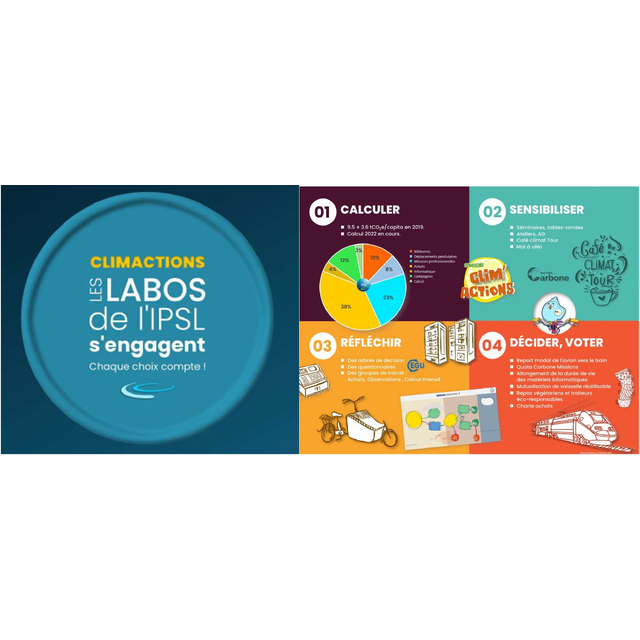
De l’intention à l’action - mobilisation d'un collectif pour la réduction de son empreinte environnementale : retour d'expérience des laboratoires de l'Institut Pierre-Simon Laplace (IPSL)
, Amphithéâtre, PalaiseauSéminaires
Mini-cycle séminaires Developpement Durable – 2025
Presentation en Français
Résumé :
Dans ce séminaire, je partagerai un retour d'expérience de l'IPSL en matière de transition environnementale, ou comment mobiliser un collectif pour passer du constat et de l'intention, à l'action, afin de réduire son empreinte environnementale, en cohérence notamment avec la stratégie nationale bas carbone de la France visant à la neutralité carbone en 2050.
Après une introduction sur les spécificités de l'IPSL, et un focus sur le laboratoire qui a été précurseur dans cette dynamique, je présenterai l'empreinte carbone de notre institut, ses principaux postes d'émissions ainsi que les réflexions soulevées. Ce diagnostic posé, j'évoquerai notre cheminement : l'organisation mise en place et nos différents champs et modes d'action, de la sensibilisation à la mise en œuvre de mesures de réduction en passant par des étapes de réflexion collective puis de votes. Le tout jalonné de succès mais aussi de difficultés et de limites bien sûr, dans des contextes qui évoluent. En distinguant ce qui relève du laboratoire ou de l'institut, je mettrai l'accent sur ce qui peut être utile pour un laboratoire souhaitant passer le pas de l'intention à l'action.
Stephanie BONIFACE est ingénieure de formation. Après 18 ans dans l'aéronautique, un congé formation lui a permis de faire un Master 'Développement Durable et Organisations' à Dauphine. Elle a ainsi pu bifurquer et rejoindre l'IPSL(*) en CDD en novembre 2021, en tant que chargée de mission Empreinte carbone, pour calculer l'empreinte carbone de l'IPSL et conduire la communauté dans une trajectoire de réduction de cette empreinte.
(*) Institut Pierre-Simon Laplace, fédération de laboratoires de recherche sur le climat et l'environnement en Ile de France.
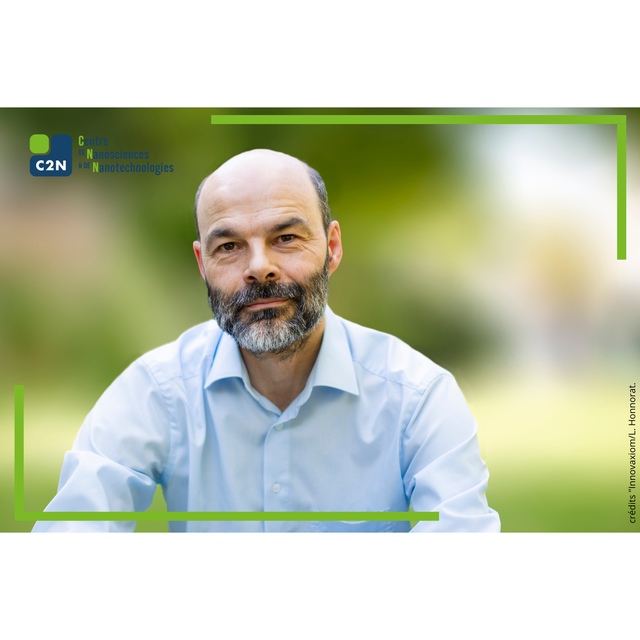
Et si, la Terre était ailleurs ?
Centre de nanosciences et de nanotechnologies, Amphithéâtre, PalaiseauSéminaires
La science-fiction explore le champ des possibles grâce à des expériences de pensée. Par jeu, demandons-nous avec elle ce que serait devenu l'humanité sur une Terre différente, plus massive par exemple, ou avec des anneaux. Aurions-nous découvert aussi rapidement les lois de la mécanique céleste si la Terre était en orbite autour d'une d'étoile binaire ? Quel impact aurait eu un ciel différent de celui que nous observons quotidiennement ? Finalement, peut-on imaginer quelle serait notre représentation du monde si la Terre était différente ? C'est certainement dans cette capacité à interroger le réel par la pensée, en se posant la languissante question « Et si… ? », que se trouve le lien secret qui unit science et science-fiction.
Roland Lehoucq est astrophysicien au CEA de Saclay. Il est aussi enseignant (Université Paris Cité, ENS Paris-Saclay et Science Po Rennes) et auteur de nombreux ouvrages faisant dialoguer sciences et science-fiction. Depuis 2012, il est président des Utopiales, le festival international de science-fiction de Nantes.
Ce projet bénéficie du soutien du projet CHIPS of Europe
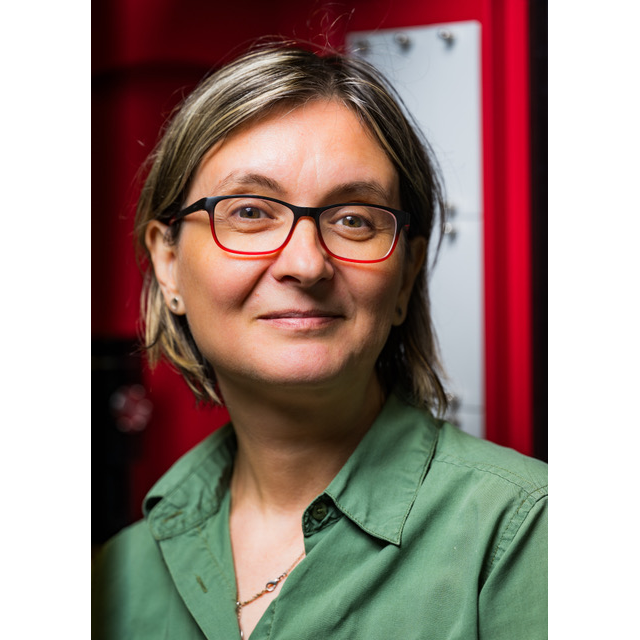
(en anglais) [Quantum-Saclay seminar] Quantum Materials at Rice University
c2n, A009,Séminaires
Abstract
I will begin by introducing the research activities in the Rice Center for Quantum Materials (RCQM) and outlining potential opportunities for collaboration between RCQM and Université Paris-Saclay. I will then focus on the work conducted in my research group at Rice, where we study topological materials with real- and reciprocal-space topology, new topological fermions, and unconventional superconductivity. Among our various research directions, I will highlight in particular our recent work on intercalated transition metal dichalcogenides (TMDs).
About the speaker
Emilia Morosan received her undergraduate research I Romania at University Al. I. Cuza. She moved to US for her doctoral studies in Physics at ISU and Ames Lab, and traveled east for a postdoc in Chemistry at Princeton University. In 2007, she joined Rice University, and she is currently the director of the Rice Center for Quantum Materials (RCQM) and the William M. Rice Trustee Professor of Physics and Astronomy, with joint appointments in Chemistry, and Electrical and Computer Engineering.
Prof. Morosan is a condensed matter experimentalist whose research straddles the boundaries between physics, chemistry and materials science. Her primary research interests are the design and synthesis of novel materials, crystal growth, and studies of topological correlated electron systems, unconventional superconductivity, local and itinerant moment magnetism, heavy fermions systems, quantum criticality. Prof Morosan and her group are using different crystal growth techniques to design, discover and grow single crystals of novel materials, often predicted theoretically to show non-trivial topological states from Weyl semimetals to Krames-Weyl fermions and multidegenerate fermions, unconventional superconductors.
Prof. Morosan has received various awards and honors, including the DOD Vannevar Bush Faculty Fellowship, Humboldt Fellowship for Advanced Researchers, Gordon and Betty Moore Foundation EPiQS synthesis investigator, Presidential Early Career Award for Scientists and Engineers (PECASE), NSF CAREER award. She is a fellow of the American Physical Society, and American Chemical Society, and has served as a APS DMP member at large.
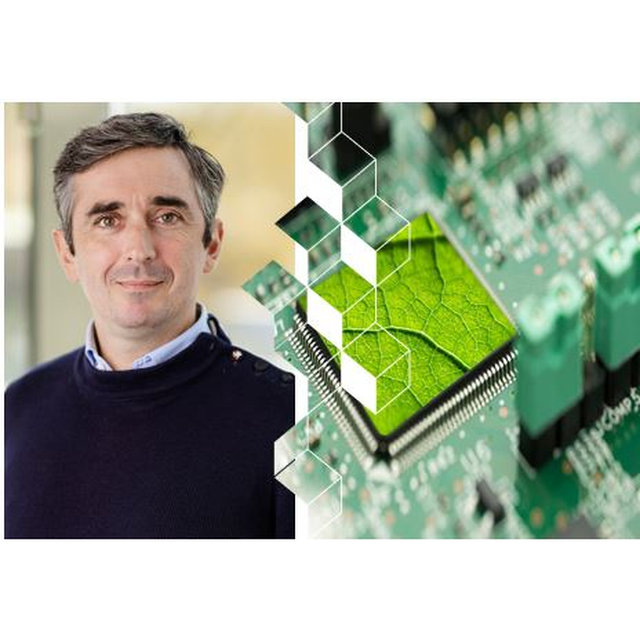
Groupe Eco-innovation : Actions énergie et procédés au sein du groupe pour limiter l’impact environnemental au CEA-LETI
C2N, , PalaiseauSéminaires
L'impact environnemental des technologies numériques n'est plus soutenable. Ressources en eau et en minéraux, réchauffement climatique, acidification des océans et des terres, recyclage des déchets électroniques, la liste des défis posés par l'appétit de nos sociétés pour le numérique est vertigineuse. Le CEA-Leti, acteur majeur de la R&D en micro-nanoélectronique, s'est engagé depuis cinq ans dans un ambitieux programme d'éco-innovation. En finançant des stages et des thèses, en participant à des projets ANR ou européens, ou en collaborant avec l'industrie, les chercheurs du CEA-Leti se sont aventurés dans de nouveaux domaines de recherche. Dans ce séminaire, j'illustrerai notre démarche à travers des exemples tels que l'analyse du cycle de vie des transistors à base de GaN et d'InP pour des applications de puissance ou RF, l'éco-conception des antennes 5G, le développement de procédés de patterning plus responsables impliquant des photorésines, des gaz de gravure plasma ou des solutions aqueuses de stripping, ou encore les actions menées pour minimiser les consommations et les émissions de nos salles blanches. Enfin, je présenterai les futurs projets qui amplifieront cette démarche.
François BOULARD (Dr. HDR) est un expert dans le domaine de la gravure plasma et de l'éco-innovation des procédés de structuration. Fort d'une solide expérience au CEA-Leti, il développe des technologies de pointe répondant aux enjeux environnementaux et industriels actuels. Docteur de l'Université de Nantes en 2009, il a débuté sa carrière au CEA-Leti dans le domaine de la détection infrarouge au sein de l'entreprise industrielle Lynred. Cette expérience lui a permis d'acquérir une expertise complémentaire qui enrichit ses recherches actuelles. Depuis 2023, F. Boulard est directeur scientifique du département patterning du CEA-Leti et dirige l'activité d'ingénierie de gravure plasma sur substrats 300mm. Ses recherches actuelles portent sur le développement de procédés de gravure pour les technologies FDSOI à faible énergie, l'évaluation de l'impact de ces procédés sur l'environnement et l'introduction de nouveaux gaz à faible potentiel de réchauffement planétaire.
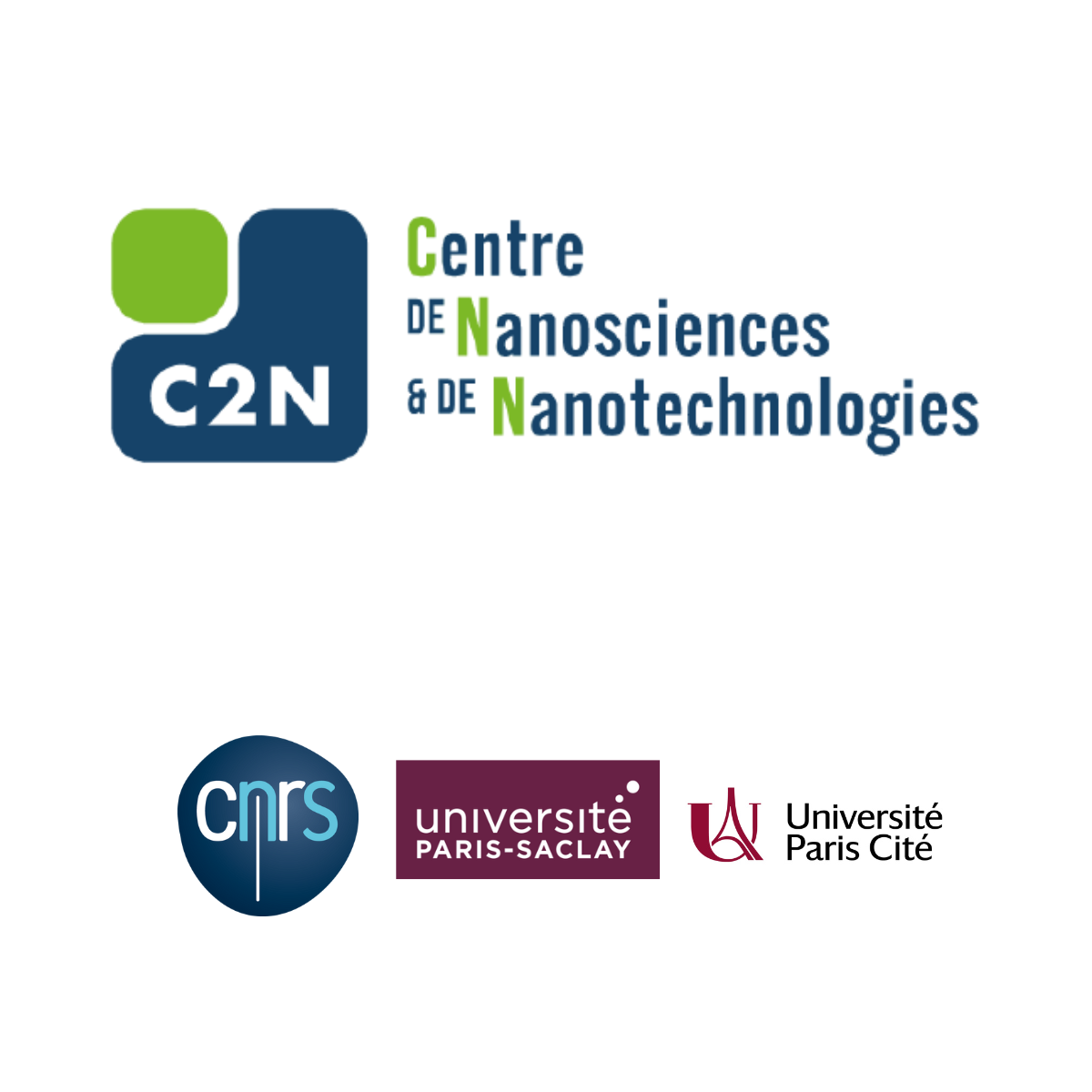
(en anglais) Design of All-dielectric Magneto-optical Metasurfaces Exhibiting Giant Faraday Rotation with High Light Transmittance
, A009,Séminaires
Magneto-optical (MO) effects are essential for the development of nonreciprocal optical devices,
such as isolators and circulators. However, the inherently weak MO response of transparent magnetic
materials at optical frequencies limits the miniaturization of MO-based devices. Enhancing light–matter
interactions in MO materials is therefore crucial for developing compact and high-performance nonre-
ciprocal photonic components.
Various approaches have been investigated to enhance MO effects, including Faraday rotation (θF ).
Early studies utilized optical cavity modes supported in one-dimensional photonic crystals to enhance
θF [1]. However, the bulky multilayered structure has limited their practical integration. Another ap-
proach employed plasmon resonances to improve θF , but suffers from√low light transmission (T ) due to
metallic absorption [2], resulting in a low Figure of Merit (FoM = θF T ) . More recently, all-dielectric
metasurfaces have emerged as a promising solution without the penalty of absorption losses [3], harness-
ing the electromagnetically induced transparency (EIT) effects to achieve near-unity T [4]. However, the
resulting θF is rather small even with extremely ideal MO parameter. Simultaneously achieving high θF
and high T remains a significant challenge in the design of ultrathin metasurface-based Faraday rotators.
In this presentation, we present designs for all-dielectric MO metasurfaces that achieves both high
Faraday rotation (θF ) and high transmittance (T ) using realistic MO parameters, exemplified by YIG-
based structures. Our approach employs quasi-bound states in the continuum (Q-BIC) resonant modes
with engineerable high quality (Q) factors to enhance θF , while constructive interference between spec-
trally overlapped TE- and TM-like Q-BIC modes under EIT conditions ensures high T , resulting in a
significantly improved figure of merit (FoM). To address fabrication challenges, we further developed
a hybrid platform by integrating a silicon-based metasurface onto a YIG film [5], thereby maintaining
similarly high MO performance. These advancements represent a key step toward the realization of
practical, ultrathin Faraday rotators and isolators. Further results on the design, optimization [6], and
fabrication [7] of MO metasurfaces will be discussed in the presentation.
References
1. M. Inoue, R. Fujikawa, A. Baryshev, A. Khanikaev, P. Lim, H. Uchida, O. Aktsipetrov, A. Fedyanin,
T. Murzina, and A. Granovsky, “Magnetophotonic crystals,” J. Phys. D: Appl. Phys. 39, R151 (2006).
2. I. S. Maksymov, “Magneto-plasmonic nanoantennas: Basics and applications,” Rev. Phys. 1, 36–51 (2016).
3. S. Jahani and Z. Jacob, “All-dielectric metamaterials,” Nat. nanotechnology 11, 23–36 (2016).
4. A. Christofi, Y. Kawaguchi, A. Alù, and A. B. Khanikaev, “Giant enhancement of faraday rotation due to
electromagnetically induced transparency in all-dielectric magneto-optical metasurfaces,” Opt. letters 43,
1838–1841 (2018).
5. S. Gao, Y. Ota, T. Liu, F. Tian, and S. Iwamoto, “Faraday rotator based on a silicon photonic crystal slab
on a bismuth-substituted yttrium iron garnet thin film,” Appl. Phys. Express 16, 072003 (2023).
6. S. Gao, Y. Ota, F. Tian, T. Liu, and S. Iwamoto, “Optimizing the optical and magneto-optical response of
all-dielectric metasurfaces with tilted side walls,” Opt. Express 31, 13672–13682 (2023).
7. K. Taniguchi, T. Kitai, T. Yambe, S. Gao, S. Iwamoto, and Y. Ota, “Fabrication of photonic crystal nanocav-
ities based on monocrystalline yttrium iron garnet,” 2024 Conf. on Lasers Electro-Optics Pac. Rim (CLEO-
PR) p. P2 043 (2024).

La pollution plastique, des sols aux océans : sources, impacts environnementaux et sanitaires, et efforts internationaux pour l'éliminer.
, c2n amphitheater,Séminaires
Abstract
Alors que les volumes de production de plastiques ne cessent de croître (460 Mt en 2019, double tous les 20 ans), les fuites vers l'environnement suivent la même tendance. Des particules (microplastiques et nanoplastiques) et des substances chimiques sont émises par les plastiques dès leur production et même dès l'extraction des ressources fossiles qui sont à la base de leur fabrication. Les plastiques polluent bien avant de devenir un déchet et sont une menace pour tous les écosystèmes et pour la santé humaine. Les menaces de la pollution plastique pour les écosystèmes marins sont connus depuis une cinquantaine d'années, alors que les recherches sur l'ampleur et les impacts de cette pollution dans les sols sont plus récentes. En raison des milliers de produits chimiques toxiques qu’ils contiennent, les plastiques ont des effets délétères avérés sur le fonctionnement des écosystèmes et sur tous les organismes vivants, y compris sur les humains.
Depuis 2022, un traité international juridiquement contraignant visant à mettre fin à la pollution plastique est en cours de négociations aux Nations Unies. Pour qu’il soit basé sur des faits scientifiques établis sans conflits d’intérêt, les scientifiques pluridisciplinaires travaillant sur la pollution plastiques dans tous les milieux se sont coordonnés dans une Coalition Internationale de Scientifiques, à l’interface entre science et politique. Leurs objectifs sont de partager les connaissances scientifiques, de sensibiliser et alerter les décideurs politiques et le grand public, pour appuyer les États membres qui soutiennent un traité ambitieux et pour contrer les fausses informations.
L'oratrice
Marie-France Dignac est directrice de recherche INRAE. Ses recherches à l'Institut d’Écologie et des Sciences de l'Environnement de Paris concernent le fonctionnement biogéochimique et écologique des sols agricoles, et les impacts des stress anthropiques, comme le changement climatique et les pollutions. Depuis quelques années, ses recherches s'orientent vers les impacts multiples de la pollution plastique des sols agricoles et les conséquences pour les organismes vivants dans les sols et pour l'agriculture. Elle est membre du comité stratégique de la Coalition internationale des scientifiques pour un Traité sur les plastiques efficace et du comité scientifique du GDR Plastiques, environnement, santé.
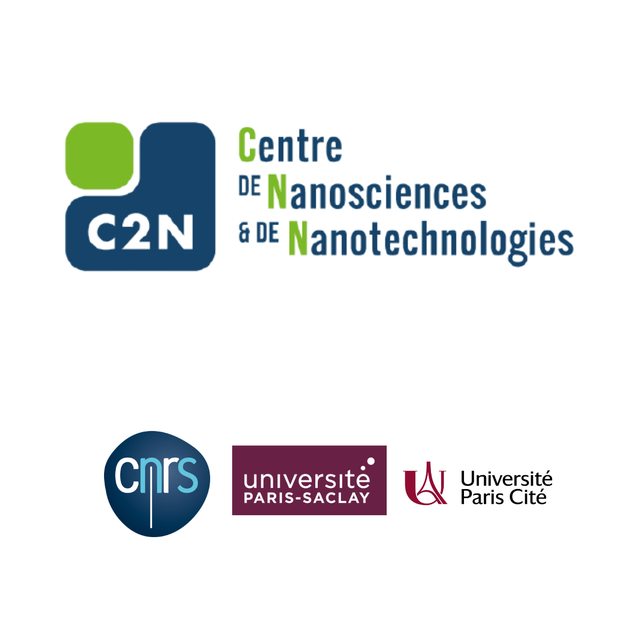
(en anglais) Efficient spin-photon interfaces with color centers in diamond and silicon
C2N - Centre de Nanosciences et de Nanotechnologies, , PalaiseauSéminaires
The realization of large-scale quantum networks, where distant spin qubits are connected via single photons, offers interesting opportunities for both quantum science and technology. In recent years color centers in various solids emerged as promising candidates for this, providing coherent spin states together with optically active transitions. In this talk, I will give a brief overview of how we can use these centers as spin-photon interfaces. I will discuss recent work investigating the optical properties of the tin-vacancy center in diamond and its integration with nanophotonic structures fabricated in bulk diamond. Finally, I will motivate the interest in developing spin-photon interfaces using silicon as a host material.

(en anglais) EEE-UFFC Distinguished Lecture: Thermodynamics and Phase-field Method of Ferroelectric Crystals with Domains
C2N - Centre de Nanosciences et de Nanotechnologies, , PalaiseauSéminaires
The lecture discusses the thermodynamics and the phase-field method of ferroelectric crystals and their applications to modeling and predicting the stability of domain structures and their responses to mechanical and electric fields. It will start with the basic principles of classical thermodynamics by introducing a modern version of the first law of thermodynamics and applying it to obtain the fundamental equation of thermodynamics for homogeneous ferroelectric crystals. The relations of the fundamental equations of thermodynamics, Landau and fluctuation theories of ferroelectrics, and the thermodynamic properties will then be discussed. It will then be followed by the discussion on the thermodynamics of ferroelectric crystals containing domain structures involving long-range elastic and electrostatic interactions and domain wall energy. The last part of the lecture will be focused on the applications of the phase-field method of ferroelectric domain structures. Examples will be presented to illustrate the application of the phase-field method to interpreting and understanding experimentally observed ferroelectric domain structures and to providing guidance to experimental growth of thin films and characterization to discover new mesoscale domain states of materials, achieve dramatically enhanced properties, and uncover hidden functionality.